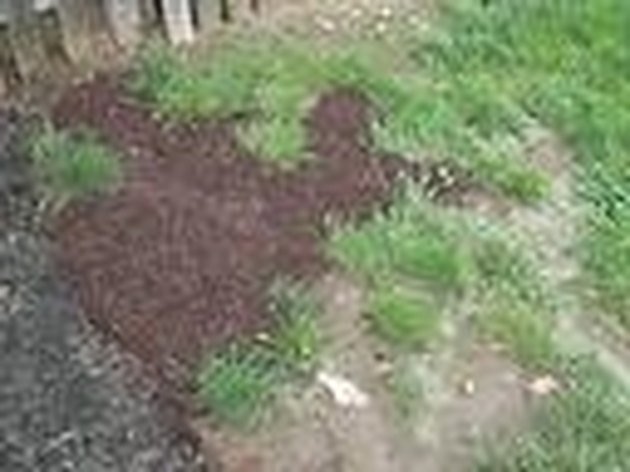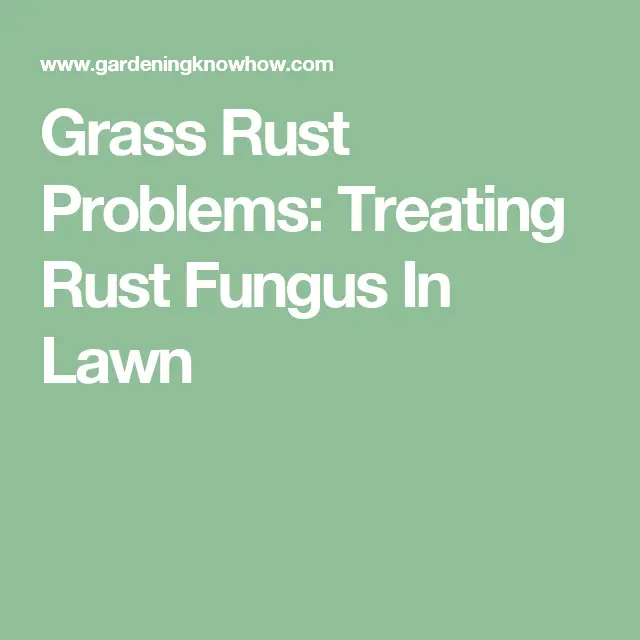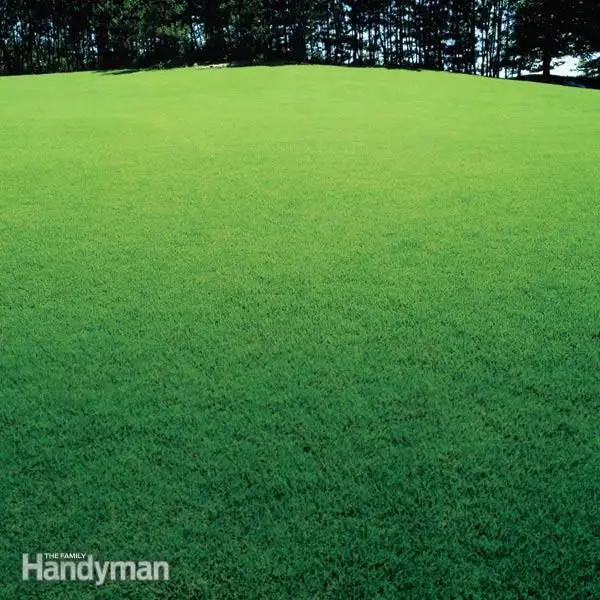Identify Snow Mold Disease
Snow mold is a lawn disease caused by two principle fungal culprits: gray snow mold , and pink snow mold .As the names suggest, gray snow mold shows a white-to-grayish webbing to the infected areas, while pink snow mold is grayish to pink.
The spores or fungal structures launch into active growth beneath the snow cover in the late winter when the temperatures beneath the snow cover range from slightly below freezing to about 45°F. When snow cover melts, the active fungal infections will continue to thrive and spread until surfaces dry out or temperatures are steadily above 45°F. Pink snow mold is slightly more tenacious, growing actively as long as the lawn is moist and temperatures are between 32°F and 60°F.
What Causes Brown Patch
Brown Patch or Large Patch is a serious fungal disease that can develop in Fescue, Zoysia, St. Augustine, and Centipede grasses. The disease typically develops when daytime temperatures are above 75 degrees Fahrenheit, and nighttime temperatures are above 60 degrees. High humidity, as well as extended periods of foliar wetness , also encourage this lawn fungus. Brown Patch is most prevalent during early spring and mid-late fall.
Home Remedies For Lawn Disease Treatment
Below are some home remedies for fungus control. These methods are meant to be used on smaller areas of infected turf or as preventive measures. Unfortunately, chemical fungicides may be necessary if your lawn is severely affected by fungus.
Compost Tea
Compost tea is a liquid version of compost made from water and microbial matter. The liquid is brewed in a machine to multiply beneficial bacteria and create a nutritious turfgrass treatment.
Compost tea is best used as a preventive turf treatment because it adds good fungi to the soil to aid in nutrient uptake, keeping your lawn healthy and strong. The beneficial bacteria also build soil structure to help reduce compaction that can lead to fungal infection.
Neem Oil
If youd prefer to go the all-natural route and avoid spraying chemicals on your lawn, you can buy a neem oil spray to fight fungus on your turf.
Neem oil is a naturally occurring insecticide and fungicide found in neem tree seeds. According to the National Pesticide Information Center, neem oil and its components are used in over 100 pesticide products.
Neem oil works by preventing fungal spores from penetrating plant tissue. While the oil wont cure already infected grass, it does help contain the spread of disease.
Baking Soda Solution
You can apply a baking soda solution to your turf to treat small areas of lawn fungus. To use this treatment effectively, youll need to mix sodium bicarbonate with water.
You May Like: Does Home Depot Fix Lawn Mowers
Also Check: When Should You Reseed Your Lawn
Can You Put Down Fungicide And Fertilizer At The Same Time
You can apply fungicide and fertilizer at the same time, but its best to use granular products. These can be mixed and applied to your lawn in a spreader. Theyll also both need to be watered in to activate the main ingredients. Also, regularly water, aerate and dethatch your lawn to stop the fungus from growing.
Take Care Of Your Lawn

Like with anything else, if you neglect your lawn, youll run into problems. Always mow your lawn correctly, and ensure it receives enough water, air, and sunlight. Those best practices should keep brown spots off your lawn for good.
Check Out Our Perfect Lawn GuidesWe Make Buying Technical Products Simple
Read Also: What To Apply To Lawn In Early Spring
What Is Lawn Fungus & How Do I Get Rid Of Turf Disease In Cincinnati Dayton Oh Or Northern Ky
6 min read
One of the most frustrating things about lawn fungus is that you can do everything rightand its sometimes still unavoidable. Lawn diseases like Brown Patch and Dollar Spot are common in Cincinnati and Dayton, OH, and Northern Kentucky, and when the conditions are right , it may be inevitable.
In this article, well explain what you should know about finding fungus on grass. We know it can be incredibly frustrating but fortunately, a healthy lawn will bounce back with the right care.
Lawn Fungus Alert: Brown Patch
Nov 23, 2020 | General, Lawn Diseases
All grass types are susceptible to lawn fungus throughout the year. Some diseases are more common than others but the best way to handle fungus in your lawn is through prevention and quick action. During spring and fall, brown patch fungus is common in warm-season grasses due to the humidity here in Georgia. But what can you do if your lush, Atlanta lawn falls victim to brown patch fungus? Lets cover it!
Don’t Miss: How To Fix Yellow Lawn
Is Lawn Fungus Treatment Effective
For the treatment to be effective, it is important that the person applying the treatment use the correct lawn fungus treatment. Contact fungicides do not penetrate the blades. Therefore, they must remain on the surface of the leaf blade for about 3-8 days to be effective. The primary purpose of contact fungicides is to form a barrier, which prevents fungus from entering the leaves, so it typically should be applied before the disease begins.
Systemic fungicides will enter the grass blade and go to the roots so, they work from the inside out. This type of fungicide is longer lasting than contact fungicides. This kind of treatment does require watering for the fungicide to reach the roots. One of the main disadvantages with systemics is the chance the disease will develop a resistance to the fungicide.
It is important to keep in mind that some fungicides can be dangerous to the environment. They can be especially dangerous if the user does not use it correctly. So, if you are not experienced with fungicides, it is a good idea to contact a local lawn care service. They will be able to evaluate the problem areas and apply the appropriate lawn fungus treatment.
For more information on lawn fungus or to schedule an appointment for one of our technicians to evaluate and apply lawn fungus treatment to your lawn, contact our team at Think Green Lawn Service by calling 648-2556.
Dont Miss: How Much Does Lawn Care And Snow Removal Cost
How To Control Lawn Rust
The best approach to control Rust in your lawn is through proper lawn care maintenance.
Proper lawn care maintenance ensures a healthy lawn and includes adequate fertiliser, reduction of thatch levels, aeration, morning watering that is deep and infrequent and mowing at regular intervals.
Alternately if the above lawn care maintenance procedures do not work, fungicides with the Common Active Ingredient Propiconazole should be used.
myhomeTURF recommends using Bumper an effective fungicide that can be purchased through our myhomeTURF online store.
You May Like: How Much Does It Cost To Get Your Lawn Sprayed
Fertilize Your Lawn Appropriately
Using too much fertilizer can make your grass prone to fungi. Too little fertilizer can do the same. If you are concerned about fungus on your lawn, it may be a good idea to try an organic, slow-release fertilizer.
Excess nitrogen in synthetic fertilizer quickly makes a lawn green but can also disturb the natural ecosystem of the lawn. If you want your grass to be less prone to disease, organic fertilizer may be the right solution.
Identify Pythium Lawn Disease
Pythium Blight is a terrible grass-killing disease that only gets worse in hot and humid weather. It likes to hang out near people, so its no surprise this thing has caused such an epidemic of dead patches all over the place! Pythium causes death by browning leaves while they wilt from high relative humidity levels or when daytime temperatures remain above 85° F with nighttime lows below 68 °F. These conditions make turf more susceptible than ever before if you notice your lawns color fading rapidly then there might be risk for pythie infestation nearby.
Dont Miss: Nail Art In Los Angeles
Recommended Reading: Will Lime Kill Weeds In Lawn
Does Lawn Fungus Control Work
The short answer is, yes, lawn fungus control products definitely work when applied properly to treat various types of fungal diseases. Of course, the timing is important.
Getting fungal activity under control quickly is important. Thats because it can be highly destructive in a short amount of time, even overnight. The type of products utilized also matters. Obviously, professional-grade products are going to work better than store-bought ones.
There are various formulations for disease control products. While a lot of companies utilize liquid fungicide products, we have found a top-of-the-line granular product that is ultimately more effective and accurate.
Instead of mixing up a huge tank of product and hoping we have the right amount from property to property, we can apply just the right amount of granular product exactly where it needs to go.
How To Get Rid Of & Treat Grass Fungus

You May Like: What To Look For When Buying An Electric Lawn Mower
You May Like: How To Get Rid Of Nematodes In Lawns
Contact A Lawn Care Professional Today
If youre concerned that your lawn is dealing with a fungal disease, the problem might be worse than you can see. You may have a lawn that is particularly susceptible to fungal disease due to geography, weather conditions, or lack of necessary lawn maintenance.
Contact Absolute Lawn Pros at and ask us about potential fungal infections and lawn treatment!
Recommended Reading: How To Get Rid Of Black Ants In Lawn
How To Treat Brown Patch Lawn Disease
Since wet conditions help promote brown patch, make sure your lawn has good drainage and air flow, and consider pruning overgrown trees to prevent too much shade and increase air movement for faster drying. It may also be helpful to aerate and dethatch the lawn every 1 to 3 months to allow air, water, and nutrients to move more freely into the soil.
Read Also: What’s The Best Lawn Fertilizer To Use
Reseed With Resistant Grass Varieties
Where all other efforts fail you may need to reseed with a turfgrass variety that has known resistance to this fungus. A variety of grasses are available with moderate resistance to the Rhizoctonia fungus. If a brown patch is an annual occurrence, consider top-seeding your lawn with resistant grasses. Check with your local university extension service on recommendations for resistant grass species.
tab1962/Getty Images
How To Deal With Lawn Fungus
While lawn disease tends to look really bad and cause a lot of panic, the good news is that it very rarely actually kills the lawn. Most of the time, the lawn bounces right back when the conditions in the disease triangle change.
This is why we do not recommend lawn fungicides. We know that a lot of companies sell this as an add-on service, but the fact is, theyre really expensive. They also dont cure the disease, they just suppress it. Its a common misconception that fungicides fix the damage thats been done. Thats not the case at all. They just stop the disease from spreading.
These types of products also need to be repeatedly appliedand that cost can really start to add up.
For lawn care companies that offer fungicides, it can be a big revenue driver. The cost of applying a single fungicide treatment can be as much as two to three times the cost of a typical lawn care application. With the number of repeated applications that youd need to get good coverage, you can end up spending the amount youd spend on a total lawn care program just for fungicide applications.
Because we have our clients best interests at heart, we let them know that wed rather see them invest money into a lawn care program that helps promote a thick and healthy lawn than to see them throw tons of money into fungicide treatments.
Recommended Reading: How To Grow Your Lawn Business
Water Your Lawn In The Morning
What Are Lawn Fungus And Disease
- Lawn fungus and disease are ailments to lawns caused by pathogens that take hold on grass and can range from cosmetic damage to your lawn to grass death.
- There are a large variety of different lawn diseases and fungi which can affect a lawn. Observe your lawn closely and view the symptoms to figure out what disease is present.
Read Also: How To Treat Red Thread In My Lawn
What Is Black Spot
Black Spot is characterised by black spots on the upper side of your lawns leaves and occurs due to fungal diseases such as Leaf Spot, Pythium Blight, Leaf Smut and Slime Mould.
These black spots not only look unattractive and serve as an eyesore, they sabotage the health and vigour of the lawn and weaken its structure.
During warmer weather, massive deluges combined with the heat and humidity create the ideal conditions for Black Spot.
General symptoms include, leaf blades with reddish-black to purplish-black spots, mould-like masses on the lawn and cobweb-like growths of fungi usually apparent during humid, wet mornings or evenings.
How To Fix Lawn Fungus

Now weve settled into national lockdown, the pace of life has slowed significantly. Each day small tasks like sweeping our patios, taking care of Spring pruning, and watering plants keep us busy, active and healthy when its essential to stay home, stay safe and save lives. We finally have the time and freedom to breathe, get our hands muddy and immerse ourselves in nature. One of the most overlooked issues you can refocus on during quarantine is how to fix lawn fungus. Fungal diseases can come in a variety of forms, from threads, slimes, and patches to rings and spots.
You can take action to stop the spread of fungal diseases with effective treatments. Here is our guide to fungal threats and the best ways to eradicate them:
Don’t Miss: What Is Killing My Lawn
Getting Rid Of Lawn Rust Naturally
Lawn rust forms almost exclusively when the grass is in a period of slow growth, so anything that interferes with your lawns normal, healthy growth puts it at risk for this fungus. While theres not much you can do about the weather, there are plenty of other ways to optimize your lawns growing conditions.
Nourish your lawn Throughout the growing season, feed your lawn small amounts of slow-release nitrogen fertilizer every six weeks. Just 0.2 to 0.5 pounds of nitrogen per 1,000 square feet is generally enough. Pay special attention to fungus-prone areas, such as shady spots.
Steer clear of high nitrogen fertilizers in the fall. Too much growth toward the end of the season leaves grass vulnerable to other problems, such as Fusarium patch and red thread disease.
Water in the morning Good watering practices protect your lawn from the damaging effects of heat stress without leaving it damp and prone to fungal infections. Watering your lawn in the cooler hours of the early morning gives the grass a chance to dry out during the day. Avoid watering in the evening because it creates the ideal wet, cool conditions for lawn rust fungus to grow and release spores.
Give your grass around 1 to 1 1/2 inch of water per week or enough to keep the soil soaked 6 inches deep. Water two or three times a week, rather than daily, so the lawns surface can dry between watering.
Rinse your lawn equipment after using it on areas of lawn rust.
How To Spot Fungal Diseases In Your Lawn
From highly-obvious spots, rings, threads to dead-looking patches brown patches, fungal diseases can take many forms. Examine your grass for signs of dampness, squishy roots and stems or fine white threads in your soil.
Others signs your lawn may have a fungal disease include:
- A wet-looking, slimy or greasy-looking lawn
- Patches or rings, usually white, yellow, or brown, that grow in diameter.
- Discolouration, frayed or distorted-looking blades of grass.
- Spots on the stems or blades of your lawn, often gray, black, red or orange.
- Powdery or threadlike coatings around and on grass blades
Fact: Mowing your grass too low can encourage fungal diseases.
Also Check: How To Get Rid Of Purslane In Lawn
Why Is My Grass Brown
Brown spots in grass have various causes. Some of the most common include:
- Dormant Grass: Grass, especially in northern climates, will go dormant during long droughts. This state of dormancy is a survival mechanism and will turn the grass a brownish color. After a good watering, either from rain or a sprinkler system, the dormant grass will turn green again.
- Pet Spots: Dog urine spots, or pet spots, are caused by Fido using the bathroom in one concentrated spot on your lawn. The chemicals in the urine can damage or kill the grass. If you cant train your pet to go elsewhere, rinse the area with water when it has finished doing its business.
- Thatch: There’s a layer between your grass and soil composed of organic matter like dead grass, leaves, etc. This is called thatch and, while a little bit is beneficial, too much of it can starve your soil of water and oxygen.
- Lawn Fungus: There are many different lawn fungus types that attack and kill your grass. Like other types of fungus, they thrive in cool, moist, shaded environments. Well talk more about them below.
- Dead Grass: If dormant grass goes too long without water or lawn fungus is left untreated, the grass will eventually die. You can tell whether grass is dead or dormant by pulling on it. If it comes out easily, it is dead.
Out of those common causes of brown spots in grass, lawn fungus is the most sinister . Thats why well cover how to prevent and treat lawn diseases below.